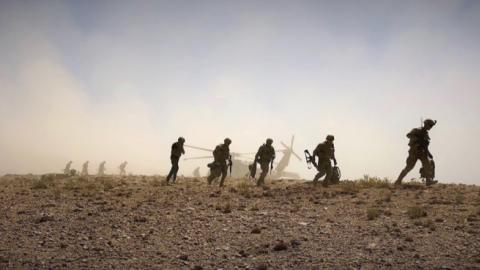Professor Carson takes up two intriguing and related questions: Why do nations often choose to intervene covertly rather than overtly in military conflicts, and why do their adversaries, after detecting the intervention, often choose to stay silent about it (or, as he calls it, “collude”)? Using four case studies (the Spanish Civil War, the Korean War, the Vietnam War, and the Soviet war in Afghanistan), he develops his own theory of why nations act these ways
His theory applies to “limited wars”— conflicts in which some of the adversaries (the outside great-power intervenors) are not employing the full range of their capabilities. Carson argues that maintaining a war’s limited character provides the motivation for this collusion of covertness. Demonstrating how this works is the core of his argument, and the case studies provide persuasive examples.
First, by intervening covertly—or by not publicizing an adversary’s covert intervention—a party avoids stirring up hawkish public opinion, both domestically and on the part of the adversary. By avoiding public demands to “win the war” by whatever means necessary and risk a face-losing, disadvantageous settlement, both leaderships preserve maneuver room.
Second, by thus reducing the political consequences, both parties can signal their desire to keep the conflict limited. In essence, both sides bargain—while pursuing their respective interests—and cooperate in escalation avoidance. Since this point is the book’s key contribution to the literature on this subject, let us see how it works.
An intervenor proceeding covertly instead of overtly pays a price: he may be constrained in the size of the force he sends and the weaponry employed, his logistics may be more complicated and less efficient, and he forgoes whatever reputational advantage he might gain by being seen as having supported his allies and stood up for his principles. By paying this price, the intervenor signals to his adversary that his desire to win is constrained by his interest in keeping the conflict limited; he shows respect for the adversary’s reputation by not confronting him openly.
When the adversary detects the intervention yet does not use his knowledge to diplomatic or propaganda advantage, he likewise signals his interest in avoiding escalation. He shows that he is avoiding a self-imposed requirement to confront the intervenor openly and defeat his intervention.
While Carson argues for the importance of this dynamic, he fully recognizes that many other reasons for covertness and collusion exist beyond the two he discusses: “[I]t bears repeating that my limited-war theory does not claim to be a ‘master cause’ of all secrecy in war. Alternative logics are compatible with my own logic even within the same conflict” (p 63). Thus, a government may intervene covertly if it hopes to hide its involvement from dovish domestic opinion, or if it seeks to gain an operational advantage from secrecy. Indeed, it is possible that keeping an (initial) intervention covert is a means of putting one’s adversary off his guard and thus achieving surprise when one subsequently intervenes in a more substantial way.
However, there are additional reasons for covertness/collusion that the book ignores or underemphasizes. If a government wants, for whatever reason, to follow a moderate course in a conflict, it has more than hawkish domestic opinion to worry about; it also must make sure that its adversaries or third parties do not interpret its moderation as weakness. Hence, it may employ covertness as a way of reducing the reputational stakes involved.
The same logic operates for the detector. While Carson notes that the detector might gain diplomatic advantages from going public, he underemphasizes the other side of the coin: complaining about an adversary’s intervention in a conflict and underreacting merely may advertise one’s weakness. A government also may collude if it fears that public knowledge of the adversary’s military action will fan fears of a wider conflict, scaring its own (dovish) public or third parties, and thereby increasing opposition to its own involvement in the conflict.
Additionally, a government may keep its intervention covert—or at least unacknowledged—for propaganda reasons; open intervention might contradict its own self-portrayal in its propaganda as pacific and anti-interventionist.
The book is at its strongest in showing how covertness and collusion can serve the purpose of avoiding escalation. But ultimately, no government intervenes for the sake of keeping a conflict limited; regardless of that goal, its actions will be determined most by the political objective it seeks to achieve. The author’s theory sheds light on one aspect of the actors’ motives in cases in which the desire to avoid escalation is relatively strong. But, as in the case of any such theory, understanding such situations requires a full assessment of the goals and circumstances of each of the actors.
Read in Naval War College Review

















